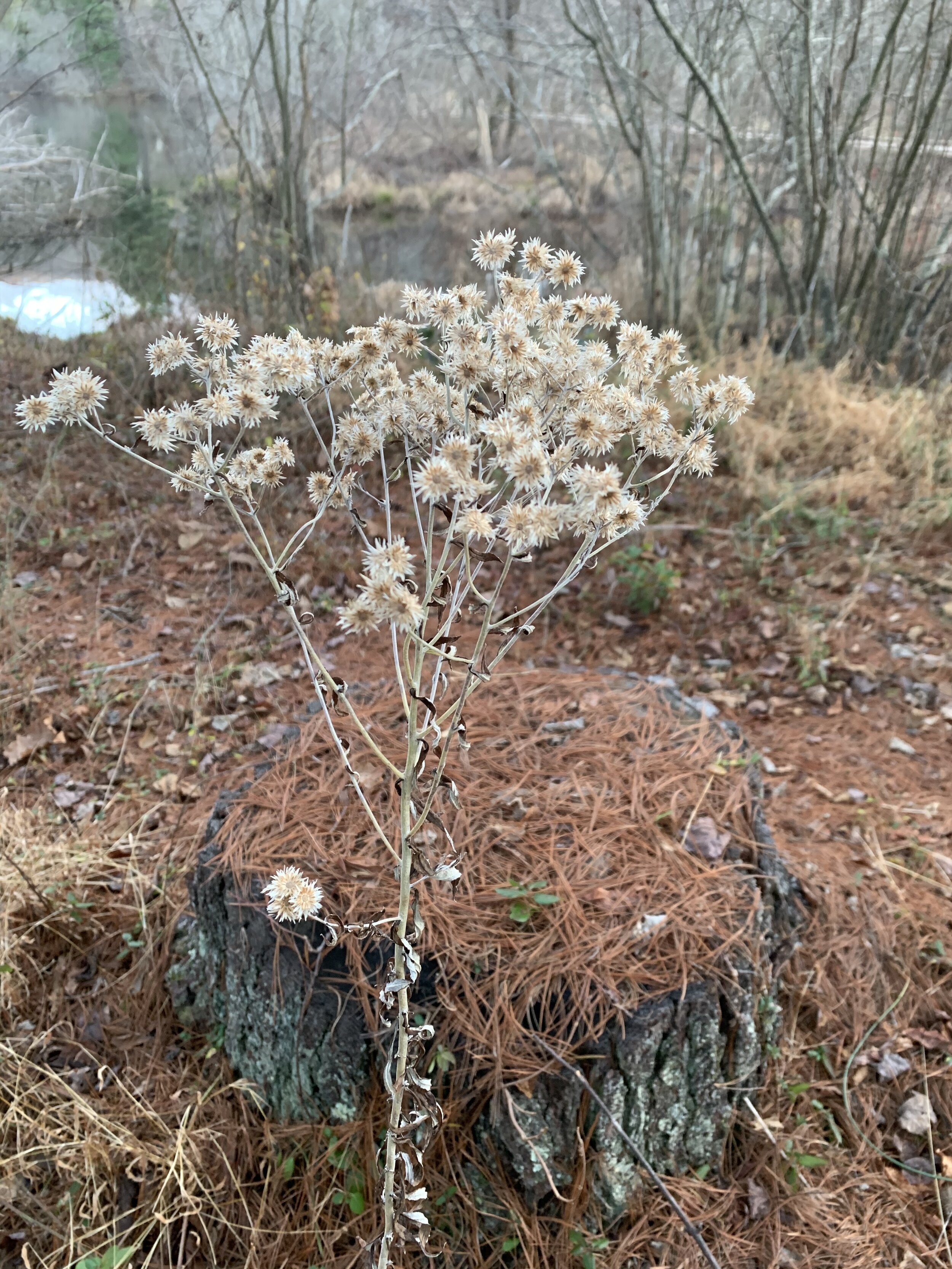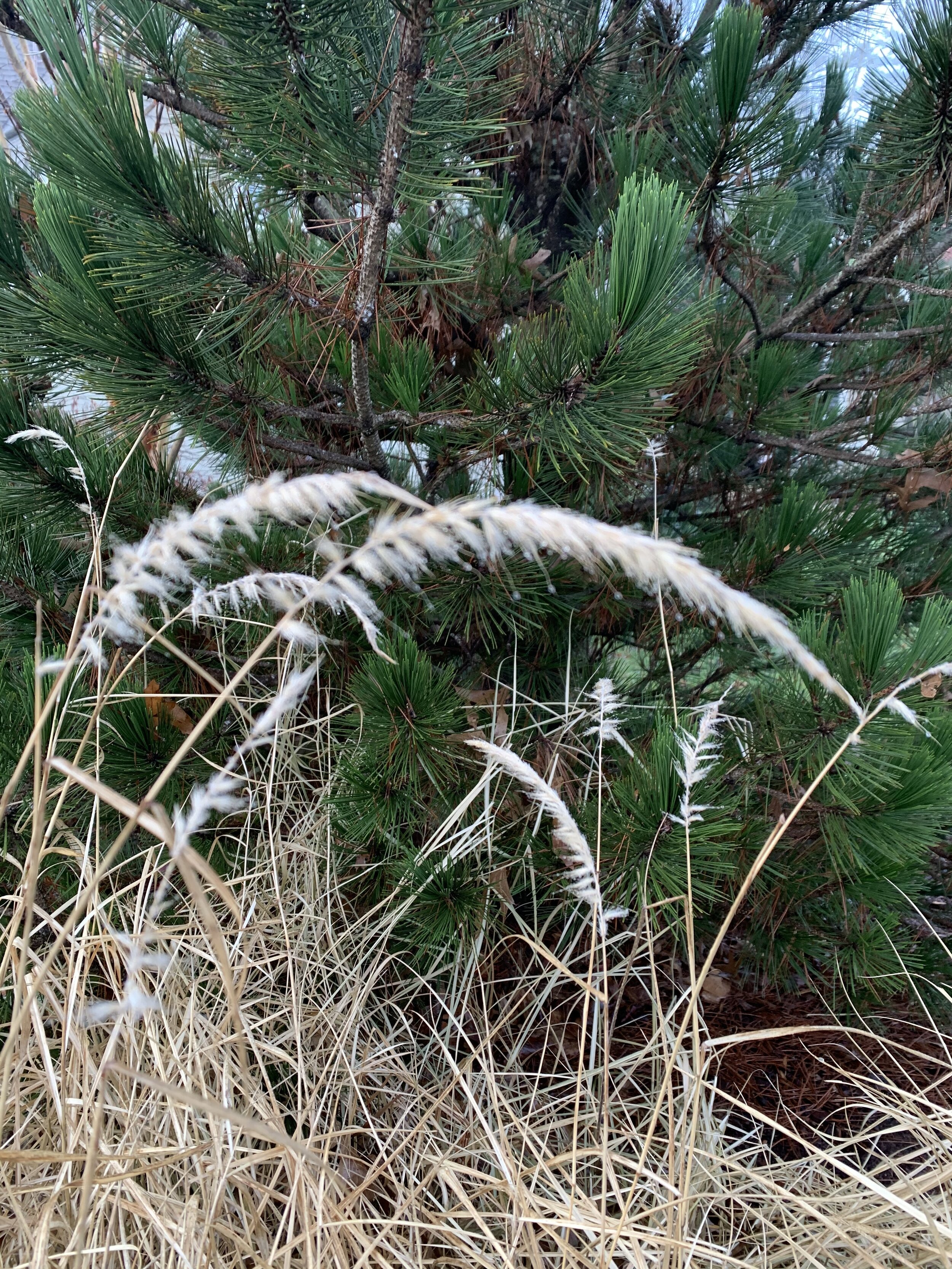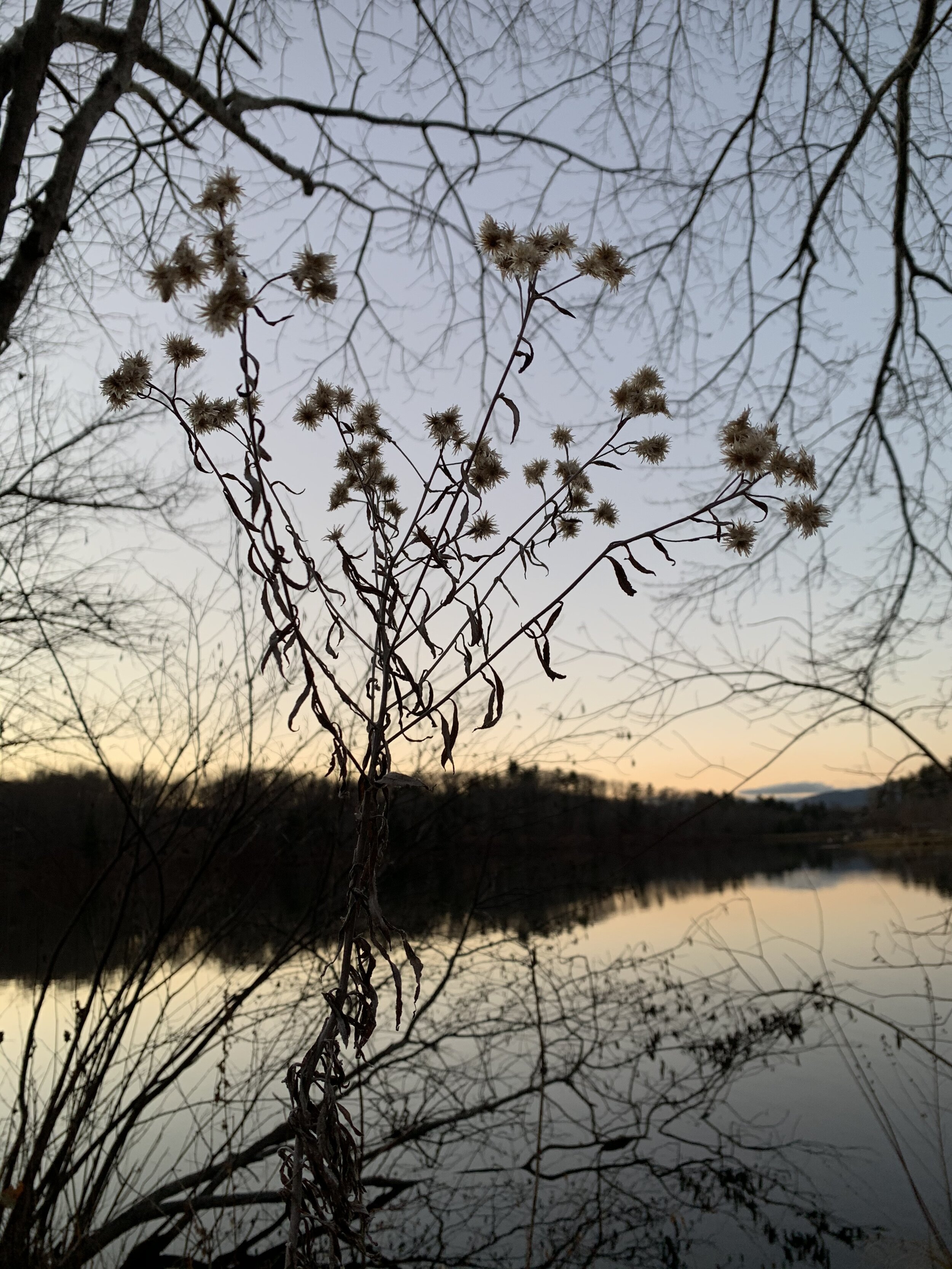The Beauty of Winter Weeds
Just because it’s winter doesn't mean you can’t enjoy the magic of the plant world. So layer-up and get out in it! You’ll not only learn a lot about plants, but you may also find some beautiful material that inspires a little winter creativity!
Winter Ironweed
I recently found this fantastic book at a little free library. Can you believe it?
I guess what they say is true—one woman’s trash is another woman’s treasure—and this, my friends, is serious treasure for a plant nerd! The book is Lauren Brown’s Weeds in Winter. My copy is an old 1976 version, but it was reprinted in 2012 as Weeds and Wildflowers in Winter.
Weeds in Winter is essentially a field guide, and is an excellent one at that, but for me it’s more of a work of art. I just can’t get over how beautiful the illustrations are! They are ‘simple’ line drawings, but each one is more amazing than the next.
What I love most about this book is that it helps you really see and appreciate the beautiful underlying architecture of plants. Lately, I’ve seen several plants on my morning walks that I wanted to identify, so this gave me the perfect excuse to bundle up & discover!
It’s easy to love the splashy colors of summer and all its green vibrancy, but there’s something really special about the neutral grays and warm browns of these winter skeletons. They reveal so much about the subtle strength and underlying beauty of the botanic world.
Winter Weeds = Interesting Art
Taking the time to slow down and look closely at these floral remnants also translates into some wonderful winter inspiration for me as a cyanotype artist After all, cyanotypes are essentially captured silhouettes, so understanding form and shape is an essential part of the composition process. If you are interested in creating cyanotypes, thinking carefully about how you arrange botanical material on your paper will make a big difference in what results you get on your final print.
I hope I’ve convinced you to take some time to get outside and get to know this interesting skeletal side of the plant world--the shape and shadow of what remains. Hopefully you’ll discover what Lauren Brown’s book reveals—that these subtle, but often ignored, winter weeds have so much to say. You’ll be in good company too. Thoreau himself took time to appreciate these “decent weeds which widowed nature wears,” and said the “withered vegetation of winter was more obvious and interesting frequently than in summer even, as if their beauty was not ripe till then.”
So with that in mind, go ahead and get out there—and be sure to let me know what treasures you find on your winter weeds walk in the comment sections below! If your walk inspires you to get creative, I’d love to hear about what you create too!









